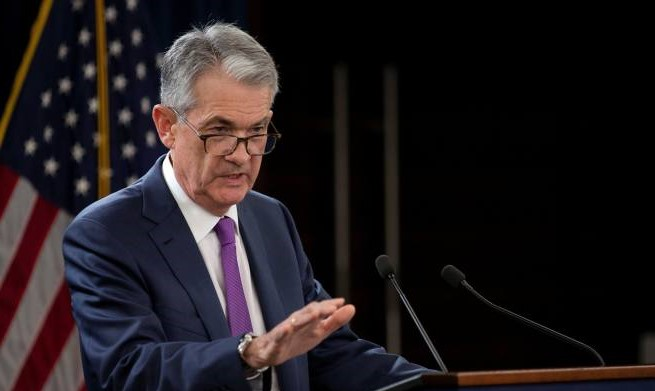By Craig Torres
(Bloomberg) Federal Reserve officials broadly agreed last month they should start reducing emergency pandemic support for the economy in mid-November or mid-December amid increasing concern over inflation.
“Participants generally assessed that, provided that the economic recovery remained broadly on track, a gradual tapering process that concluded around the middle of next year would likely be appropriate,” minutes of the Sept. 21-22 Federal Open Market Committee meeting released Wednesday said.
“Participants noted that if a decision to begin tapering purchases occurred at the next meeting, the process of tapering could commence with the monthly purchase calendars beginning in either mid-November or mid-December.”
The minutes showed Fed officials wrestling with puzzles squarely within their mandate. They discussed whether labor supply would bounce back to 2019 levels and continued to bet that elevated inflation would subside as supply constraints in markets for products and people eased up. The decision to taper this year is also about managing the risk that they are wrong on prices.
‘Bit of a Pivot’
“There is a bit of a pivot happening where there is a worry that transitory inflation might be transitioning to concern that it might be structural,” said Michael Pond, head of global inflation market strategy at Barclays. “Even the doves on the committee want to make sure that inflation expectations and financial conditions don’t start to cause alarm.”
Fed officials last month left interest rates near zero but signaled they were close to beginning to scale back their $120 billion in monthly asset purchases. Chair Jerome Powell told reporters during a post-meeting press conference the process could start as soon as November and would likely end around mid-2022.
“The minutes make it clear that the Fed will announce tapering at the next FOMC meeting, on Nov. 2-3, unless disaster strikes,” said Ian Shepherdson, chief economist at Pantheon Macroeconomics.
Investors took the minutes in their stride. Stocks rose while the yield on 10-year Treasuries declined and the two-year rate — which is more sensitive to policy moves — rose.
Officials discussed an illustrative tapering path: “The path featured monthly reductions in the pace of asset purchases, by $10 billion in the case of Treasury securities and $5 billion in the case of agency mortgage-backed securities.”
Fed officials commented that the path “provided a straightforward and appropriate template” they might follow, according to the minutes.
The record of the closed-door debate showed U.S. central bankers grappling with high uncertainty on both sides of their mandate for full employment and stable prices.
Inflation is rising at the fastest pace in years and is well above the Fed’s 2% goal. Some officials say supply bottlenecks and production tangles — blamed on disruption as the economy reopens from the pandemic — could sustain price pressures for longer than they expected. Consumer prices rose 5.4% in September from a year earlier, the Labor Department reported Wednesday.
“Most participants saw inflation risks as weighted to the upside because of concerns that supply disruptions and labor shortages might last longer and might have larger or more persistent effects on prices and wages than they currently assumed,” the minutes said.
Inflation Risks
In addition, Fed staff said risks had worsened, including the possibility that “longer-run inflation expectations would move appreciably higher and lead to persistently elevated inflation.”
Fed officials last month projected price pressures would ease back close to their goal next year, but nine of 18 forecast at least on interest-rate increase during 2022, up from seven in June. The FOMC left rates near zero and said they would stay there until the labor market has reached maximum employment and inflation was on track to exceed 2% “for some time.”
“Various participants stressed that economic conditions were likely to justify keeping the rate at or near its lower bound over the next couple of years,” the minutes said. “In contrast, a number of participants raised the possibility of beginning to increase the target range by the end of next year,” because they saw the thresholds for liftoff potentially being met by that time.



